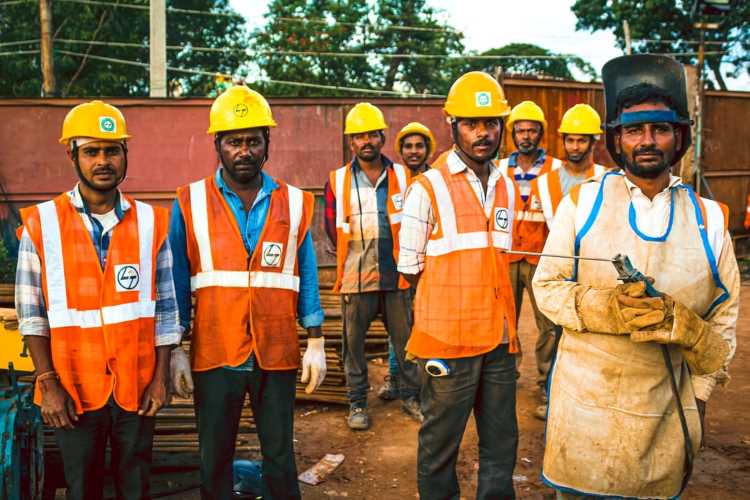Describing and analysing the Indian labour market pose inherent challenges given the country’s size and diversity. India experienced very low employment growth despite the fact that GDP growth rate was reasonably high during a major part of the last two decades. Two things about the country’s labour market stand out. First, the presence of huge informal labour and second, a very low female labour force participation rate.
In addition to ‘jobless growth’, India has experienced concentrated employment growth, mainly in urban areas and for men. This has been accompanied by a decline in the female labour force participation rate which is a major puzzle. Informalisation remains a defining feature of the labour market. Another worrying trend is the increasing informalisation of workforce in the formal sector.
A large majority of workers (93%) in India are informal due to the nature of the workplace and the conditions provided by employers. Behind the apparent persistence of informality in the Indian labour market are two underlying but diverging trends. Firstly, the share of workers in the unorganised sector (enterprises with fewer than 10 workers including own-account workers) fell from 86.3% in 2004-05 to 84.3% in 2009-10 and further to 82.2% in 2011-12.
READ I Labour codes implementation to face delays as states struggle to frame rules
Informalisation in organised sector
At the same time, the share of informal workers in the organised sector (i.e. workers without access to social security in larger enterprises) increased significantly because of the increasing use of contracts and other forms of casual labour. Due to these two countervailing trends, the percentage of workers in informal employment in India has stayed stagnant at around 93%.
Another phenomenon that was one of the biggest puzzles that emerged during the 2000s was the fall in female labour force participation which was most pronounced in rural areas due to the withdrawal of women from agriculture. At less than 21%, India has one of the lowest levels of female labour force participation in the world. This is the result of a complex set of demand and supply-side factors including social norms and lack of appropriate job opportunities in the vicinity of where women live. The long-term challenge in India, like most of South Asia, is to increase opportunities for women to work outside home in decent and productive employment.
READ I Universal pension can transform Indian economy
Missing women in labour market
The female labour participation rate in India fell to 20.3% in 2019 from more than 26% in 2005, according to World Bank estimates. Compare this with 30.5% participation in neighbouring Bangladesh and 33.7% in Sri Lanka. Figure 1 depicts the fall in female labour force participation during the last decade.
The Figure 2 depicts trends in female labour force participation in a rural-urban disaggregated manner.
One of the reasons behind the high incidences of informal labour in India is the poor labour absorption of the manufacturing sector over the years. The sectoral distribution of income shows that approximately 14% of the GDP is generated from the agricultural sector, 25% from the industrial sector and 61% from the services sector. This is represented in the following Table 1.
However, occupational distribution does not follow a similar trend. It is overwhelmingly dependent on the primary sector. Table 2 depicts occupational distribution over time.
Given the occupational distribution, this implies that a large number of workers are still stuck in the primary sector indicating huge underemployment and low productivity. The service sector is comparatively more productive, but without corresponding growth in the secondary sector this may not be sustainable in the long run.
READ I A secure savings instrument can solve growth, social security riddles
Even though India’s sectoral transformation somewhat follows the development trajectory as postulated by the Clerk-Fisher hypothesis (1935), the occupational transformation did not keep pace. In 2020-21, 42.21% of the workforce in India was employed in agriculture, while the secondary sector employed 18.5% and the service sector employed 39.5% of the workforce. While the share of Indians working in agriculture is declining, it is still the main sector of employment.
The employment elasticity of the secondary sector is very low and this sector cannot absorb excess labour released from the primary sector in any significant numbers. A part of such excess labour ends up in the urban informal sector in the tertiary sector as do workers eking out livelihoods through petty economic activities. This explains preponderance of informality in urban space across India to a certain extent.
India needs to address the above two anomalies on a priority basis. Large-scale informalisation of workforce results in vulnerability and decent work deficit. Achieving decent work conditions is a proclaimed goal of SDG 2030. Without a substantial reduction in informality, it is not possible to achieve this goal. Also, ensuring greater participation of women is imperative given the overall poor labour force participation rate at 46%, whereas the average for developing countries is 54%.
Low female labour force participation implies inherent gender discrimination in labour market participation. For greater gender parity in labour market, participation, an enabling eco-system and conditions that facilitate greater female labour force participation need to be provided.

